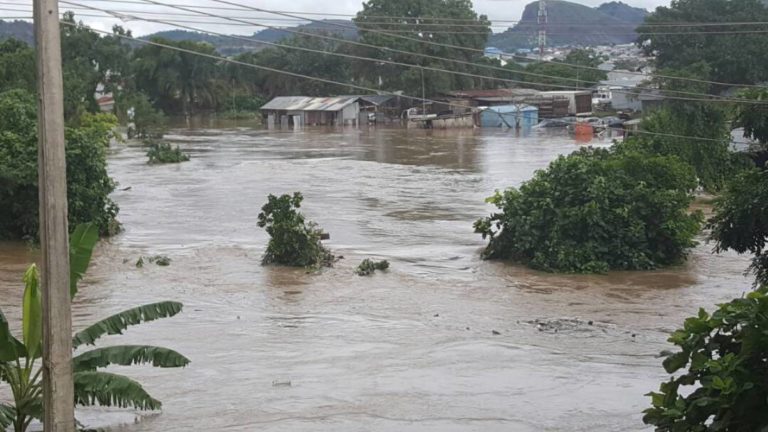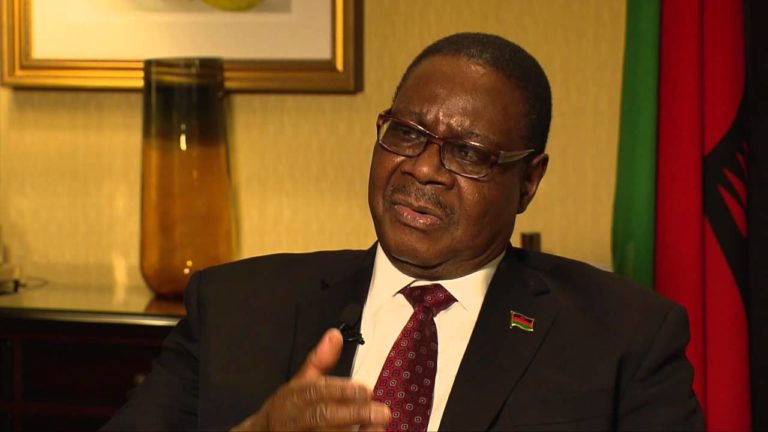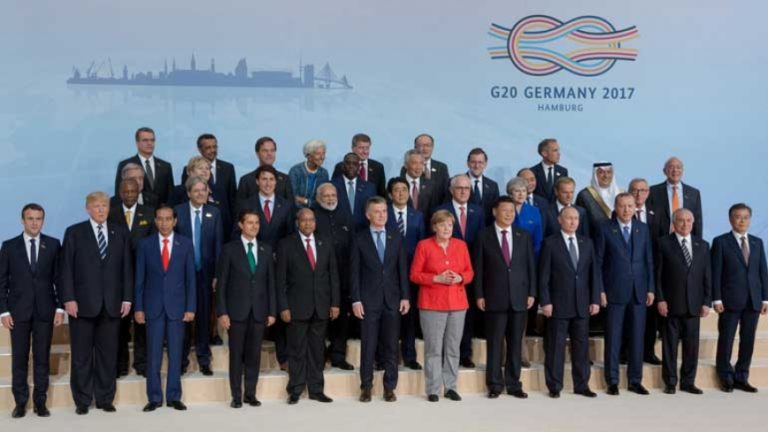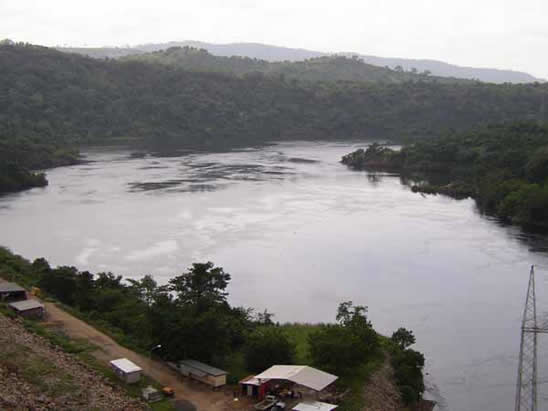Radio Report: Anxiety as flood overruns Lagos
Flood wrecks havoc in Suleja, kills eight family members
A flood, which followed many hours of downpour, displaced numerous homes and caused deaths in Suleja, Niger State on Sunday, July 9, 2017 witnesses said.
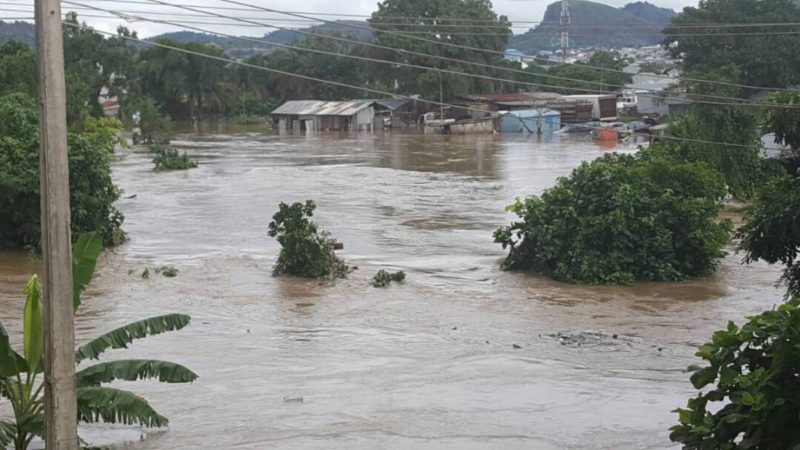
Witnesses said eight members of a household were suspected to have died in the flood, which affected Suleja and Tafa Local Government Areas (LGAs) of the state.
The head of the household was said to have survived, but his two wives and six children were not that lucky.
The New Agency of Nigeria (NAN) reports that many families were affected, with household effects floating in the water.
Many people struggled to bale water out of their houses.
Mohammed Mohammed, the District Police Officer in-charge of Division ‘A’ Police station in Suleja, could not confirm the casualty figure, but said his men had visited the flood scenes.
Mohammed said: “The flood affected many people who built their houses along the river bank; many houses have been destroyed with unconfirmed number of deaths recorded.
“Police are providing security around the scene so that hoodlums will not cart away victims’ property especially those lying outside.”
Mohammed promised to furnish more details on the incident.
The National Emergency Management Agency (NEMA) was not also able to give details.
Meanwhile, Malam Abdulkareem Samanja, the Village Head of Hayin Nasarawa-Iku in the nearby Tafa Local Government Area, decried the loss of property.
Samanja said he was still awaiting report from ward heads on the incident.
At Suleja General Hospital, Musliu Mohammed, a 17-year-old boy recovered from the flood and brought into the hospital by sympathisers, was placed on admission.
Malawi ratifies Paris Agreement
The Republic of Malawi on Thursday, June 29, 2017 deposited its instrument of ratification of the Paris Agreement on Climate Change.
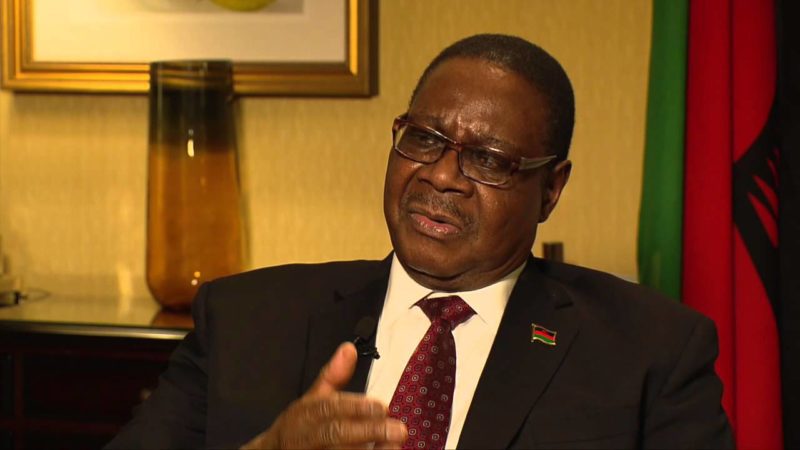
The East African nation thus becomes the 153rd country to endorse the global treaty, after Egypt and Togo, which ratified the climate accord respectively on Thursday, June 29 and Wednesday, June 28 2017.
According to the United Nations Framework Convention on Climate Change (UNFCCC), Malawi’s ratification of the pact will enter into force in a month’s time on Saturday, July 29, 2017.
The Paris Agreement builds upon the Convention (UNFCCC) and – for the first time – brings all nations into a common cause to undertake ambitious efforts to combat climate change and adapt to its effects, with enhanced support to assist developing countries to do so. As such, it charts a new course in the global climate effort.
The Paris Agreement’s central aim is to strengthen the global response to the threat of climate change by keeping a global temperature rise this century well below 2 degrees Celsius above pre-industrial levels and to pursue efforts to limit the temperature increase even further to 1.5 degrees Celsius.
Additionally, the agreement aims to strengthen the ability of countries to deal with the impacts of climate change. To reach these ambitious goals, appropriate financial flows, a new technology framework and an enhanced capacity building framework will be put in place, thus supporting action by developing countries and the most vulnerable countries, in line with their own national objectives. The Agreement also provides for enhanced transparency of action and support through a more robust transparency framework.
FishNet: Why fish is more valuable than oil
Nnimmo Bassey, Director, Health of Mother Earth Foundation (HOMEF), at the “FishNet Dialogue” held in Port Harcourt, Rivers State on Friday, July 7 2017, lamented that many fisher folks in the Niger Delta region have become fetchers of wood as the creeks and rivers have been so polluted that fishing has become largely unproductive
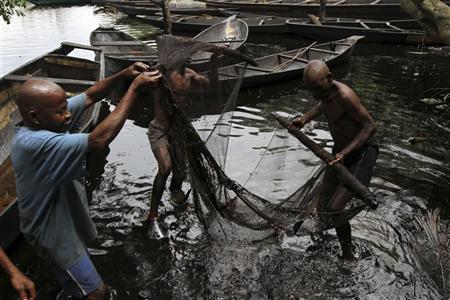
True change can come from below. Change can begin from below. True change must come from below. Just as it is the root system that makes a tree stand, so it is with changes that must last. We have ignored the roots of our problems long enough and today we are dissecting those roots so that we can clearly see where the proverbial rain began to beat us.
Along the 853km coastline of Nigeria are men and women floating in turbulent tides, seeking to draw out the swirling foods that are in turn seeking their own food. There are epic struggles on and in our waters: our fishing brothers, sisters, mothers and fathers struggle to catch the aquatic beings. The aquatic beings struggle not just to escape the nets and hooks, but also to catch a breath as they are suffocated by myriad pollutants and poisons. These realities extend along the coasts of our inland water bodies as well as the continental shorelines of Africa and around the world.
And, so, our stop today is for reflections on the health of our aquatic ecosystems and the challenge of offshore extractive activities and the economic situation of our peoples. Similar dialogues have commenced in South Africa where fisher folks are fighting for a right to fish on the piers of the Durban harbour without restrictions that blocks them away known fishing grounds. We have also had similar conversations at Kribi, Cameroun, where the entrance of the Chad-Cameroun pipeline has destroyed coral reefs and fisher folks have to go deeper into the seas in hope of having a meaningful catch.
As we gather today on this challenged water front in Port Harcourt, our FishNet Dialogue will examine the past and the present and draw up a picture of our preferred future. We are looking back at what the fishing situation was in the Niger Delta before the extraction of petroleum resources despoiled the marine environment. We are reflecting on what species were available and what ecological norms our ancestors applied to ensure a steady supply of nutritious foods and how they built the local economies. We are looking at what has happened since our territories became an industrial waste dump, where mangroves have been destroyed by many factors and where fishing grounds have been largely curtailed by military shields ringing oil and gas facilities. We will touch on the rising sea levels, eroding coastlines and the salinisation of our fresh water systems. Importantly, we are reflecting on who are the culprits and what must be done and how.
Our hope is that, as we sit in this and other FishNet Dialogues, we will extend hands to other fishing communities along the entire coast of Africa (and beyond), share our stories and underscore the facts of our common humanity, our right to food and our right to live in dignity. We look forward to the day when it will dawn on all that fish is more valuable than oil. We are looking forward to the day when our voices will echo Fish Not Oil on our simmering tides. We are looking forward to the day when change will truly come from below and climate action will finally have as a pivotal hook the reality that offshore fossil fuels must be left untapped and unburned.
Fisheries contribute substantially to local economies and are a vital source of protein for most of our peoples. It is estimated that fisheries contribute up to N126 billion to Nigeria’s economy annually. Sadly, only about 30 percent of our fish needs are produced locally – and these come from artisanal, aquaculture and industrial fisheries. In the Niger Delta, it is a worrisome truth that many fisher folks have become fetchers of wood as the creeks and rivers have been so polluted that fishing has become largely unproductive. Fishing communities have been forced to depend on imported fish by pollution and by reckless and illegal harvesting of fish by foreign trawlers along our continental shelf. Starkly, some analysts believe that the Nigeria is the highest importer of fish in Africa.
It is time to challenge our policy makers to interrogate the essence of development and determine what truly makes economic sense. The offshore extractive sector employs a handful of citizens, but throws millions out of work due to the taking over of fishing grounds and the pollution of the creeks, rivers and seas. Although GDP measures do not put food on dining table or is not an index of well-being, for a notion of the economic implication, we consider the case of Ghana. As at 2011, the fishery industry accounted for nearly five percent of Ghana’s GDP and jobs in the offshore oil industry for Ghanaians were estimated to be around 400 with an expectation that this may double by 2020. Meanwhile, fishing directly or indirectly supported up to 10 percent of the country’s population. Think about that.
We must consider the grave impacts on the global climate by the world’s continued dependence on fossil fuels – an addiction that permits extreme extraction and the poking around for deposits in the deep sea. We question the economic sense of investing huge sums of money to set up drilling platforms and Floating Production Storage and Offloading (FPSO) stations in stormy, dangerous waters.
Offshore oil production involves environmental risks, the most notable one being oil spills from oil tankers or pipelines, and from leaks and accidents including facilities failure on the platform. The materials used in the process of drilling are also a source for worry. We cite the example of drilling muds used for the lubrication and cooling of the drill bits and pipes. The drilling muds release toxic chemicals that affect marine life. One drilling platform can drill several wells and discharge more than 90,000 metric tons of drilling fluids and metal cuttings into the ocean.
We also have to consider produced water, a fluid brought up with oil and gas and making up about 20 percent of the waste associated with offshore drilling. At exploratory stages, seismic activities send strong shock waves across the seabed that can decrease fish catch, damage the hearing capacity of various marine species and lead to marine mammal stranding. Many dead whales washed onshore in Ghana at the time seismic and oil drilling activities peaked in that country’s offshore. We also had similar experiences during offshore accidents, such as the Chevron rig explosion off the coast of Bayelsa State in January 2012.
Offshore oil rigs also attract seabirds at night due to their lighting and flaring and because fish aggregate near them. The attraction of fish to the rigs deprives fisher folks of access due to the naval cordon around the facilities. The process of flaring involves the burning off of fossil fuels which produces black carbon (a current menace around Port Harcourt) and constitute a source of greenhouse gases that compound the global warming crisis.
Fishery on the other hand has little or no negative externality on the people or environment. It is a source of food and food security as well. It is a source of job creation. And it does not harm the climate. Offshore extraction and its externalities point towards negative indicators and are prime sources of conflicts between nations. Our FishNet Dialogues aim to build local economies, fight global warming at the base and build a movement from below to ensure a liveable planet, support local economies and build peace.
Researchers to make drought-resistant tomato available to farmers
The National Horticultural Research Institute (NIHORT) in Ibadan, Oyo State, has said that it will soon make a drought-resistant tomato variety available to farmers in the country.

Dr. Olagorite Adetula, Director of Research and Head of Vegetable and Floriculture Department of NIHORT, disclosed this in an interview with the News Agency of Nigeria (NAN) in Ibadan.
Adetula said the drought-resistant variety would enable farmers to cultivate tomatoes all year round and eradicate scarcity of the food item during the dry season in the country.
Adetula also said all year farming would help to boost the income of farmers and improve the country’s Gross Domestic Product.
According to her, 80 per cent of most varieties of tomatoes presently in the country are lost during the dry season.
She said: “The drought-resistant tomato the institute is currently working on can with withstand dry season and bacteria wilt (Ralstonia Solanacerum) and fungi wilt (Fusarium Oxysporium) that usually destroy tomatoes during the dry season.
“We have tried the drought-resistant tomato variety with some selected farmers in Benue and Plateau States and it yielded very well in that location.
“But we still have to test this variety in different ecological zones and as well as follow the guidelines in releasing new varieties of seeds in Nigeria before we can release this drought-resistant tomato variety to farmers.
“As soon as the institute gets fund, we are going to try this variety in Ibadan, Kano, Gombe and Mbato in Imo among others, and then complete the necessary guidelines.”
Adetula further said most of the imported tomato seeds are not well adapted to the Nigerian environment unlike the new variety being introduced by NIHORT.
She said: “Most farmers spray chemicals to control disease and research has shown that no chemical can effectively control tomato disease, especially bacteria wilt, which affects tomato production.
“It is therefore necessary to develop an improved variety of tomato with tolerance to bacteria wilt. By God’s grace, we have been able to develop a drought-resistant tomato variety, which can withstand bacteria wilt.”
G20 can propel global economy towards resilient, prosperous future
The G20 group of nations, cooperating together and supporting vulnerable countries, has the power to propel the global economy towards the low-carbon, resilient and prosperous future defined by the Paris Climate Change Agreement, writes the Executive Secretary of the UN Framework Convention on Climate Change (UNFCCC), Patricia Espinosa, in a recent edition of G7G20. She adds that the Paris Agreement is not like a chain that can be broken by one link, but an ever deeper and widening web of internationally aligned self-interest that bodes well now and over the years and decades to come.
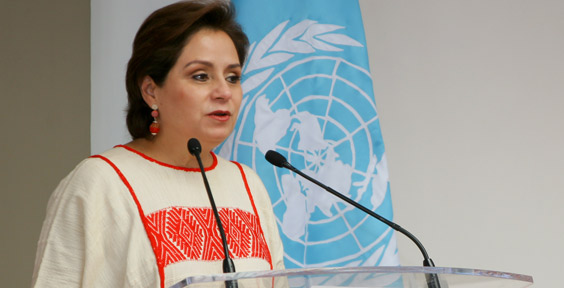
It is a busy year for the government and people of Germany: five months after the country hosts the G20 summit in Hamburg, the eyes of the world will be on the former capital city of Bonn for the 2017 United Nations climate conference.
The links are not merely geographical
The G20 members, acting nationally, cooperating together and supporting vulnerable countries beyond their group, have the power to propel the global economy towards the low-carbon, resilient and prosperous future envisioned in the Paris Climate Change Agreement as part of the wide-ranging Sustainable Development Goals.
This was underlined in a recent report by the Organisation for Economic Co-operation and Development (OECD) called Investing in Climate, Investing in Growth.
It argues that “bringing together the growth and climate agendas” could add one per cent to average economic output in the G20 by 2021 and lift 2050 output by up to 2.8 per cent.
If the economic benefits of avoiding climate change impacts such as coastal flooding or storm damage are factored in, the net increase to gross domestic product in 2050 would be nearly five per cent.
A just transition
The report singles out infrastructure investment as crucial. Limiting the global temperature rise to well below 2°C, in line with one of the Paris Agreement’s temperature goals, will require close to $7 trillion a year between now and 2030.
But the study points out that this is only around 10 per cent more than investing in carbon-intensive infrastructure and indeed would help save money – as well as help save the planet – because of increases in energy efficiency leading to annual fuel savings globally of around $1.7 trillion.
The report makes recommendations that underline the importance of integrating the aims and ambitions of the Paris Agreement in national economic policies – for example, the strengthening of climate mitigation policies including carbon pricing, fossil-fuel subsidy reform, smart regulations and the use of public procurement to help drive low-carbon growth.
The report also underlines the importance of private sector investments and support from local government, companies and workers is not just a transition, but a just transition.
Continuing Paris in Bonn
The OECD report is timely – in November more than 190 countries, presided over by the island state of Fiji, will be hosted by the UN Framework Convention on Climate Change in Bonn on the banks of the Rhine.
The 2017 UN climate conference needs to make important strides towards finishing the guidelines needed to fully implement the Paris Agreement while also setting the stage for a dialogue in the following year on achieving the agreement’s even lower goal of 1.5°C.
The Bonn conference will also prepare for an assessment or stocktake, planned for 2018, that will seek to evaluate how all the countries’ efforts are collectively getting the world on track to achieve the Paris Agreement.
Higher ambition is needed, and needed quickly, as the OECD and other reports say. The current set of national climate action plans are a marked improvement over what was on the table pre-Paris 2015, but they are still behind the curve.
Preserving forests
It is not just hard infrastructure such as the power, buildings and transportation sectors where climate-friendly investment is needed – there also needs to be smarter management of the world’s soft infrastructure, including forests and agricultural systems.
There is positive news here too. CDP, the former Carbon Disclosure Project, is reporting that ever more companies are joining an international initiative under the post-Paris global climate action agenda aimed at deforestation-free commodity supply chains.
New ones include McDonald’s Latin American franchise Arcos Dorados, Swiss fragrance and flavour company Firmenich, Brazilian meatpacker JBS, American healthcare company Johnson & Johnson, Brazilian paper producer Klabin and Canadian restaurant group Restaurant Brands International.
Forests play a critical role in reducing global warming, and deforestation itself is responsible for as much as 15 per cent of global greenhouse gas emissions, as well as habitat loss and social conflict.
Momentum since Paris has been nothing short of breathtaking – the agreement came into force less than 12 months after being adopted and to date over 150 Parties to the Agreement have ratified it.
The announcement by the United States in June that it would withdraw from the Paris Agreement has triggered widespread disappointment but also unprecedented solidarity among all other nations and cities, states and the private sector in the US and beyond.
There’s a new reality in global climate action
That reality is that this is not like a chain, broken by one link, but an ever deeper and widening web of internationally aligned self-interest that bodes well now and over the years and decades to come.
With the Prime Minister of Fiji, Frank Bainimarama, the Government of Germany and the City of Bonn, I look forward to welcoming all the parties to the Paris Agreement in November so we together can accelerate implementation further and faster everywhere and write the next historic chapters of our shared future.
G20 Summit: Reactions trail world leaders’ commitment to tackle climate change
The Climate Action Network (CAN) has welcomed the G20 summit’s commitment to strengthen climate action. This, according to CAN, is the first time a G20 Summit has produced a detailed Climate and Energy Action Plan outlining a progressive to-do list to jointly tackle climate change. All countries, save one, recognise that this is about protecting people’s health, safeguarding ecosystems, promoting economic prosperity and global stability.
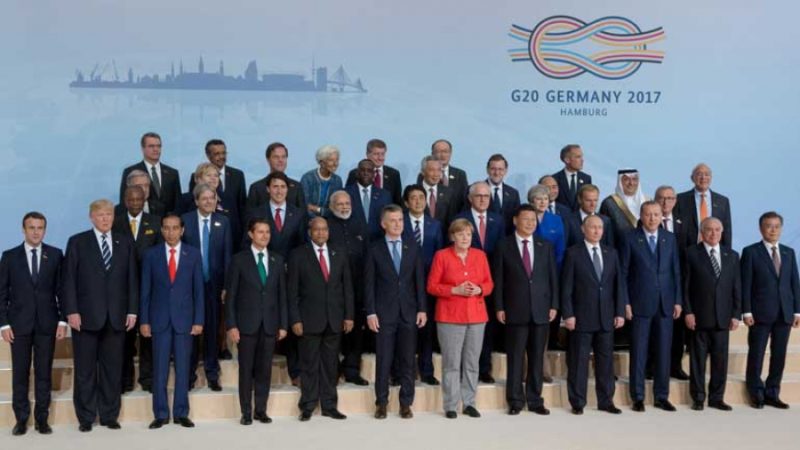
Unfazed by the US withdrawal from the Paris Agreement, the G19 stand united, supported by allies in numerous cities, regions and businesses, to forge ahead with a safe and clean future for all. Civil society wants all countries to build on this momentum, even as it calls on them to implement the Paris Agreement, come prepared to assess their collective progress in 2018 and trigger a process to ratchet up climate ambition by 2020. As the next hosts of the G20, civil society expressed its support for Argentina to take forward the climate agenda.
Manuel Pulgar-Vidal, leader of WWF’s Global Climate & Energy Practice, said: “Despite US pressure, world leaders at the G20 Summit showed they are serious about creating an equitable transition to a decarbonised world by by sending a strong signal on the Paris climate agreement. The Action Plan on Climate and Energy for Growth attached to the Communique is the most detailed climate to-do list we have ever seen from the G20. Now it’s about taking concrete action within and between countries, building on existing efforts by business, cities and civil society and amplifying those through true governmental leadership.”
Sven Harmeling, Climate Change Advocacy Coordinator for CARE International: “CARE welcomes the G20 leaders’ greater attention to the climate crisis. The clear commitment by 19 of the G20 members to implementing the Paris Agreement is an important signal, but it requires greater action, immediately, to live up to the group’s responsibility.
“The endorsed Action Plan on Climate and Energy for Growth, though by far not sufficient to tackle the climate crisis, can help achieve the goals of the Paris Agreement. Alongside much stronger and more rapid emission cuts through shifting away from fossil fuels, this must prioritise greater efforts and support to protect vulnerable people, especially poor women and girls, from climate disruption and the human suffering it creates.”
Wendel Trio, Director, Climate Action Network (CAN) Europe: “We welcome the continued commitment of our leaders to the Paris Agreement. The adoption of the Climate and Energy Action Plan is a clear indication that the world’s largest economies are well aware that action is urgently needed to make the zero carbon transition happen.
“The next step is obviously to move from commitment to action, by raising the level of ambition of the Paris pledges, phasing out fossil fuel subsidies by 2020 and providing support to those most vulnerable to climate change impacts.”
Christoph Bals, Policy Director, Germanwatch: “The G20 has passed the first part of the Trump Test on climate. 19 leaders in Hamburg stood united in their commitment to the Paris Agreement and its swift implementation. President Trump tries to undermine the Paris Agreement, but instead he has further isolated himself. His objective to sell American fossil fuels to the world received a hard reality check at the G20.
“In the Communiqué, even the United States accepted a commitment to a global transition towards low-greenhouse gas emission energy systems consistent with the UN Sustainable Development Goals (SDGs). This includes SDG 7 which aims to substantially raise the share of renewables and double the improvement rate for energy efficiency by 2030. The future belongs to energy efficiency and renewable energy. The second part of the climate test will come at home. For Germany, this means agreeing on a planned phase-out of coal and a transition strategy for the transport sector.”
Alex Doukas, Senior Campaigner, Oil Change International: “Rightfully, other G20 leaders put Donald Trump in the corner for a time out over his absurd climate change denial. They deserve credit for standing united behind the Paris Agreement. Yet talk is cheap, and unfortunately the G19 failed to take action to demonstrate that they’re serious about climate action by actually ending handouts to the fossil fuel industry, instead of once again offering the same tired ‘commitment’ backed by little action. All fossil fuel subsidies must end by 2020 – a crucial step that civil society groups, major investors, and big insurers are all pushing for.”
Sasanka Thilakasiri, Senior Policy Advisor, Oxfam: “With the other 19 members firmly defending the Paris Agreement as ‘irreversible,’ President Trump’s stubborn insistence on propping up the fossil fuel industry leaves him isolated and stuck in the past.“
Alden Meyer, director of strategy and policy at the Union of Concerned Scientists: “The G20 summit provides another powerful demonstration that the rest of the world is moving ahead with climate action, leaving President Trump isolated following his ill-advised decision to withdraw from the Paris Agreement.
“Other leaders understand that climate change threatens the prosperity and wellbeing of their citizens, and are eager to capitalise on the tremendous economic opportunities offered by energy efficiency and renewable energy solutions.
“The Hamburg Climate and Energy Action Plan – endorsed by all the other countries attending the summit – provides a roadmap for implementing and strengthening the commitments that countries made in Paris, as is needed to avoid the worst impacts of climate change. Adoption of the plan, along with the declaration by all other leaders that the Paris Agreement is ‘irreversible,’ shows that President Trump’s ‘fossil fuels forever’ agenda is failing to get any traction, no matter how hard he tries to cling to it.
“President Trump may have forced inclusion of language in the communiqué on access to and use of fossil fuels by threatening to block the whole text if he didn’t get his way, but that will do nothing to slow the accelerating shift away from polluting fossil fuels towards a global economy powered by clean, renewable energy.”
Mohamed Adow, Christian Aid, International Climate Lead, said: “After this G20 summit, there’s no doubt that the world’s largest economies are taking climate action seriously. The message from world leaders in Hamburg is clear: Donald Trump’s isolationist stance on climate policy is simply not going to derail plans to implement and advance the Paris Agreement.
“The US President’s weak attempts to capsize the climate movement have failed: he is now marooned on a political island of his own making, with his head buried in the sand. Meanwhile the rest of the world is moving ahead, having outlined a comprehensive Climate and Energy Action Plan which allows them to get on with the business at hand – the transition to a green economy.
“The G20 (or G19) have collectively sent a strong signal that they’re committed to implementing and advancing the Paris Agreement, and that they’re working together to deliver better growth, prosperity and stability. They have proven that the global evidence-based values which bind us together, and which allow us to confront global challenges, are secure.”
“We are pleased that the EU and China – two of the world’s top three biggest economies – have demonstrated their commitment to steer the way towards a low-carbon economy. Their leadership – and that of Angela Merkel’s – has strengthened the global resolve to make a big shift away from dirty energy. Now, perhaps we can finally shift gears from just defending the Paris Agreement, to enacting it and delivering at home.”
Greenpeace International: “The G19 held the line, defending the Paris Agreement against Trump’s backward decision to withdraw, but that is not enough. The G19 should have committed to accelerate the transformation away from coal, oil and gas. If Paris was the starting point, Hamburg must sow the seeds of much greater ambition.
“Millions of people suffering from the impacts of climate change are demanding urgent action to end the age of coal, oil and gas. To put words into action, the G19 must now accelerate the clean energy transition and set sail from Hamburg with an agenda of change.
“Merkel, as G20 host, helped secure a united G19 outcome, but she must now lead the way at home and end Germany’s reliance on coal by committing to a socially just coal phase-out by 2030.”
Ecuador benefits as GCF makes flagship REDD+ transfer
The Green Climate Fund (GCF) has commenced the transfer of its first REDD+ disbursement to help Ecuador reduce greenhouse gas (GHG) emissions and protect its forests.
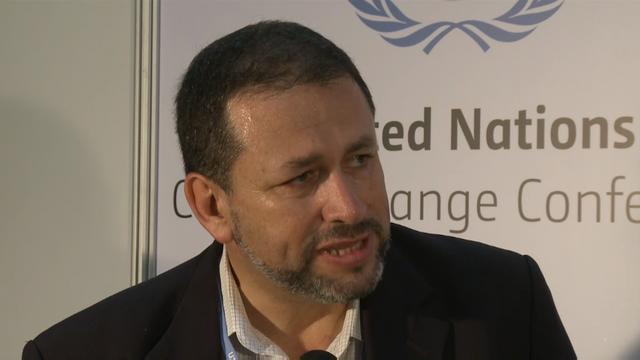
The current transfer of $7.9 million to the United Nations Development Programme (UNDP), a GCF Accredited Entity, marks a key milestone for the Fund. It is the first time GCF is distributing climate finance supporting REDD+.
REDD+ refers to a process moderated by the United Nations Framework Convention on Climate Change (UNFCCC) which supports countries’ efforts to reduce emissions from deforestation and forest degradation, and foster conservation, sustainable management of forests, and enhancement of forest carbon stocks.
The GCF contribution to Ecuador is part of $84 million financing to assist this South American nation halt net deforestation by 2020.
GCF’s investment will co-finance Ecuador’s REDD+ action plan. Targeted investment will control agricultural expansion into forest areas, while agricultural and livestock production practices will be implemented to reduce deforestation.
The climate finance will also encourage loans that encourage sustainable farming practices, promote tax incentives for activities supporting REDD+, and ease the flow of deforestation-free commodities in the global market.
Ecuador’s Minister of Environment, Tarsicio Granizo, said Ecuador has just finished its preparation phase for REDD+ according to UNFCCC guidelines and requirements.
“The funding received by the Green Climate Fund is very important because it allows us to continue with the implementation phase of the policies and actions set out in the REDD+ Action Plan,” said Mr Granizo, referring to his country’s UNFCCC-backed strategy to incorporate REDD+.
Jessica Faieta, Assistant Secretary General and Director of the Regional Bureau for Latin America and the Caribbean at UNDP, added the “implementation of the REDD+ Action Plan in Ecuador, possible thanks to the funding received from the Green Climate Fund, is an important milestone in helping the country achieve net zero deforestation by 2020.” She said the plan would also generate benefits for local communities, with a special focus on women and youth.
The GCF currently provides support to maintain and amplify efforts to implement the early phases of REDD+. In addition, GCF has been consulting widely on how to incorporate REDD+ results-based payments as a cornerstone of its climate finance and provide finance for countries in all phases of REDD+.
This issue is slated to be discussed at the 17th GCF Board meeting, currently being held at the Fund’s headquarters in Songdo, South Korea.
GCF Senior Forest and Land Use Specialist, Juan Chang, said REDD+ has enormous potential in bringing together the benefits of climate finance and sustainable development.
“REDD+ can contribute to significantly reduce emissions generated from unsustainable land use activities, conserve standing natural forests and increase carbon stocks in previously degraded lands, while also respecting indigenous people and forest-dependent people living in these ecosystems,” he said.
Mr Chang added the full implementation of REDD+ from an idea to established practice received a major boost after it became a key element of the Paris Agreement (article 5) following years of REDD+ negotiations.
One of the most recent REDD+ studies indicates it has the potential to reduce global emissions by up to 24 to 30 percent.
Studies find gonorrhoea becoming ‘untreatable’
Data from 77 countries show that antibiotic resistance is making gonorrhoea – a common sexually-transmitted infection – much harder, and sometimes impossible, to treat.
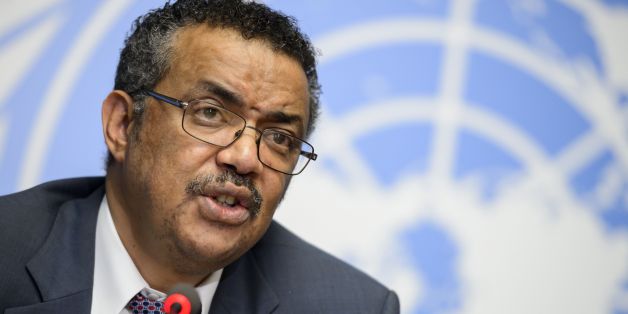
“The bacteria that cause gonorrhoea are particularly smart. Every time we use a new class of antibiotics to treat the infection, the bacteria evolve to resist them,” said Dr Teodora Wi, Medical Officer, Human Reproduction, at the World Health Organisation (WHO).
WHO reports widespread resistance to older and cheaper antibiotics. Some countries – particularly high-income ones, where surveillance is best – are finding cases of the infection that are untreatable by all known antibiotics.
“These cases may just be the tip of the iceberg, since systems to diagnose and report untreatable infections are lacking in lower-income countries where gonorrhoea is actually more common,” adds Dr Wi.
Each year, an estimated 78 million people are infected with gonorrhoea. Gonorrhoea can infect the genitals, rectum, and throat. Complications of gonorrhoea disproportionally affect women, including pelvic inflammatory disease, ectopic pregnancy and infertility, as well as an increased risk of HIV.
Decreasing condom use, increased urbanisation and travel, poor infection detection rates, and inadequate or failed treatment all contribute to this increase.
Monitoring drug resistance
The WHO Global Gonococcal Antimicrobial Surveillance Programme (WHO GASP), monitors trends in drug-resistant gonorrhoea. WHO GASP data from 2009 to 2014 find widespread resistance to ciprofloxacin (97% of countries that reported data in that period found drug-resistant strains), increasing resistance to azithromycin (81%), and the emergence of resistance to the current last-resort treatment: the extended-spectrum cephalosporins (ESCs) oral cefixime or injectable ceftriaxone (66%).
Currently, in most countries, ESCs are the only single antibiotic that remain effective for treating gonorrhoea. But resistance to cefixime – and more rarely to ceftriaxone – has now been reported in more than 50 countries. As a result, WHO issued updated global treatment recommendations in 2016 advising doctors to give two antibiotics: ceftriaxone and azithromycin.
Development of new drugs
The R&D pipeline for gonorrhoea is relatively empty, with only three new candidate drugs in various stages of clinical development: solithromycin, for which a phase III trial has recently been completed; zoliflodacin, which has completed a phase II trial; and gepotidacin, which has also completed a phase II trial.
The development of new antibiotics is not very attractive for commercial pharmaceutical companies. Treatments are taken only for short periods of time (unlike medicines for chronic diseases) and they become less effective as resistance develops, meaning that the supply of new drugs constantly needs to be replenished.
The Drugs for Neglected Diseases initiative (DNDi) and WHO have launched the Global Antibiotic Research and Development Partnership (GARDP), a not-for-profit research and development organisation, hosted by DNDi, to address this issue. GARDP’s mission is to develop new antibiotic treatments and promote appropriate use, so that they remain effective for as long as possible, while ensuring access for all in need. One of GARDP’s key priorities is the development of new antibiotic treatments for gonorrhoea.
“To address the pressing need for new treatments for gonorrhoea, we urgently need to seize the opportunities we have with existing drugs and candidates in the pipeline. In the short term, we aim to accelerate the development and introduction of at least one of these pipeline drugs, and will evaluate the possible development of combination treatments for public health use,” said Dr Manica Balasegaram, GARDP Director. “Any new treatment developed should be accessible to everyone who needs it, while ensuring it’s used appropriately, so that drug resistance is slowed as much as possible.”
Gonorrhoea prevention
Gonorrhoea can be prevented through safer sexual behaviour, in particular consistent and correct condom use. Information, education, and communication can promote and enable safer sex practices, improve people’s ability to recognise the symptoms of gonorrhoea and other sexually transmitted infections, and increase the likelihood they will seek care. Today, lack of public awareness, lack of training of health workers, and stigma around sexually transmitted infections remain barriers to greater and more effective use of these interventions.
There are no affordable, rapid, point-of-care diagnostic tests for gonorrhoea. Many people who are infected with gonorrhoea do not have any symptoms, so they go undiagnosed and untreated. On the other hand, however, when patients do have symptoms, such as discharge from the urethra or the vagina, doctors often assume it is gonorrhoea and prescribe antibiotics – even though people may be suffering from another kind of infection. The overall inappropriate use of antibiotics increases the development of antibiotic resistance in gonorrhoea as well as other bacterial diseases.
“To control gonorrhoea, we need new tools and systems for better prevention, treatment, earlier diagnosis, and more complete tracking and reporting of new infections, antibiotic use, resistance and treatment failures,” said Dr Marc Sprenger, Director of Antimicrobial Resistance at WHO. “Specifically, we need new antibiotics, as well as rapid, accurate, point-of-care diagnostic tests – ideally, ones that can predict which antibiotics will work on that particular infection – and longer term, a vaccine to prevent gonorrhoea.”


